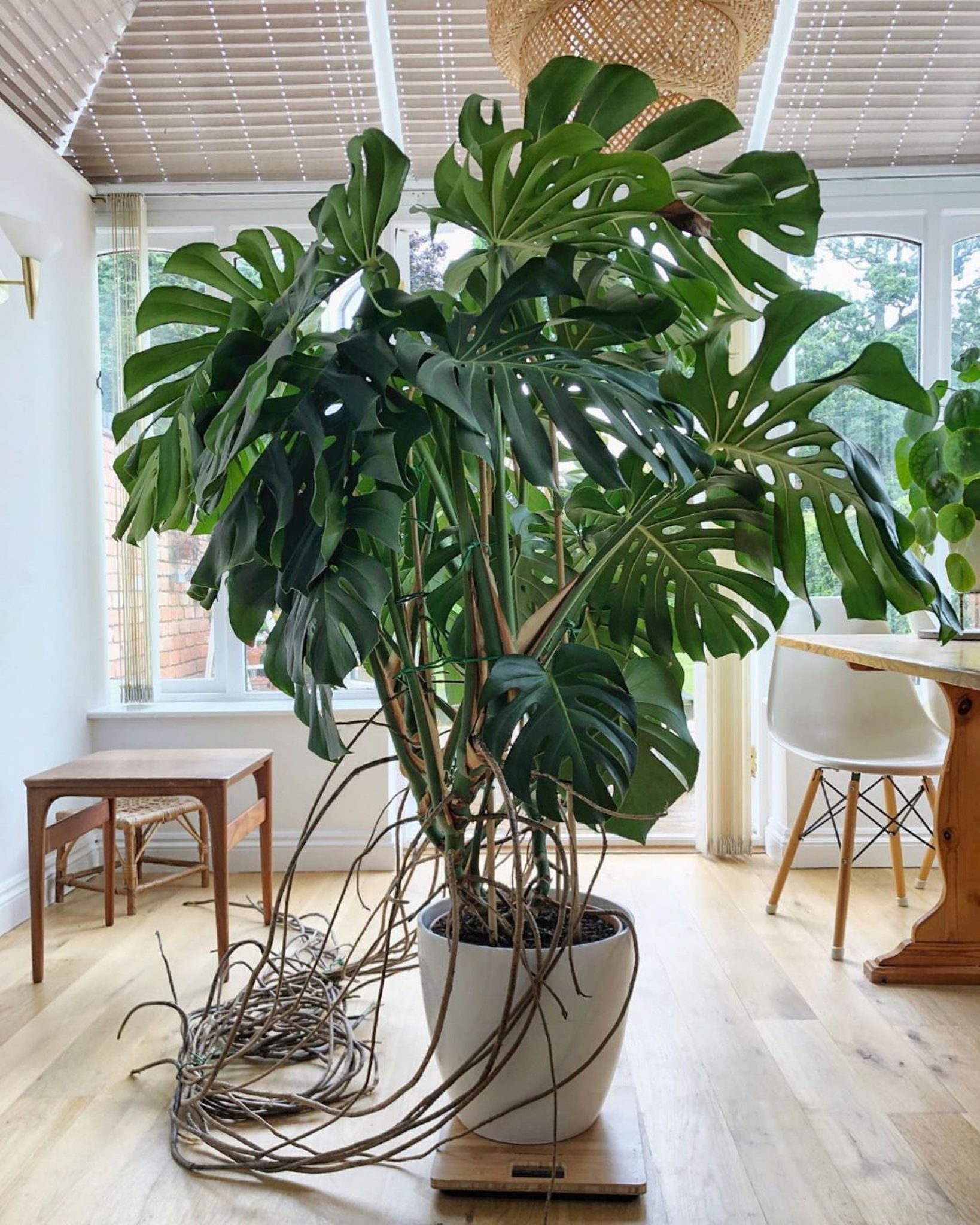
Source homesfornh.com
Welcome to our comprehensive guide on caring for Monstera Deliciosa plants indoors. Whether you’re a beginner or an experienced plant parent, this article will provide you with all the information you need to keep your Monstera Deliciosa happy and healthy. With its iconic split leaves and aerial roots, the Monstera Deliciosa is a popular choice for indoor gardening enthusiasts.
Native to the tropical rainforests of Central and South America, Monstera Deliciosa thrives in warm, humid environments. Its large, glossy leaves make it a stunning addition to any indoor space. In this article, we will explore essential care tips, common problems, propagation methods, and more.
1. Choosing the Right Location
The Importance of Sunlight
Monstera Deliciosa plants thrive in bright, indirect sunlight. Place them in a location with filtered or dappled sunlight, away from harsh, direct rays. A spot near a north or east-facing window is ideal. If you don’t have access to sufficient natural light, you can also use artificial grow lights to provide the necessary light energy.
Perfect Temperature and Humidity
Monstera Deliciosa plants prefer temperatures between 65°F and 85°F (18°C – 29°C). They can tolerate slightly lower temperatures, but it’s best to avoid exposing them to below 60°F (15°C). Additionally, Monstera Deliciosa thrives in high humidity environments. If your home tends to be dry, consider using a humidifier or placing a water-filled tray near the plant.
Careful with Air Conditioning and Drafts
Monstera Deliciosa plants are sensitive to sudden temperature changes caused by air conditioning or drafts. Keep them away from vents and windows that may expose them to cold drafts. Fluctuating temperatures can stress the plant, leading to leaf discoloration and other issues.
2. Providing Adequate Watering
Watering Frequency and Techniques
Monstera Deliciosa plants prefer regular watering, but they don’t like their roots to be constantly wet. As a general rule, water them thoroughly when the top inch of soil feels dry to the touch. Ensure your pot has proper drainage to prevent waterlogged roots. Use room temperature water and avoid chlorinated tap water, as they are sensitive to chemicals. Consider using filtered or rainwater if possible.
Avoid Overwatering and Underwatering
Overwatering can lead to root rot and other fungal diseases, while underwatering can cause the leaves to turn brown and crisp. Strike a balance and adjust the watering frequency based on the season and indoor humidity levels.
3. Fertilizing for Optimal Growth
The Importance of Nutrients
Monstera Deliciosa plants benefit from regular fertilization to ensure optimal growth. Use a balanced, water-soluble fertilizer specifically formulated for houseplants. During the growing season, usually from spring to early fall, fertilize your plant every 2-4 weeks. Reduce the frequency during winter, as the plant’s growth slows down. Always follow the instructions provided by the fertilizer manufacturer.
Avoid Overfertilization
While providing nutrients is important, it’s crucial not to overfertilize your Monstera Deliciosa. Excessive fertilization can lead to fertilizer burn and root damage. If you notice yellowing or browning of the leaves, it may be a sign of overfertilization. It’s better to err on the side of caution and provide a little less fertilizer than to risk harming your plant.
4. Table Breakdown – Monstera Deliciosa Care Overview
| Aspect | Care Requirements |
|---|---|
| Light | Bright, indirect sunlight |
| Temperature | 65°F – 85°F (18°C – 29°C) |
| Humidity | High humidity (>60%) |
| Watering | Thoroughly when top inch of soil is dry |
| Fertilizing | Every 2-4 weeks during growing season |
5. Frequently Asked Questions
Q: How often should I repot my Monstera Deliciosa?
A: Monstera Deliciosa plants generally need to be repotted every 1-2 years as they outgrow their current pots. Look for signs such as roots coming out of drainage holes or a general decline in plant health.
Q: Are Monstera Deliciosa plants toxic to pets?
A: Yes, Monstera Deliciosa plants are toxic to cats, dogs, and other pets if ingested. Keep them out of reach or consider choosing pet-friendly plants if you have curious furry friends.
Q: Can I propagate my Monstera Deliciosa?
A: Absolutely! Monstera Deliciosa can be propagated through stem cuttings or by air layering. Both methods are relatively simple and can help you create new plants to expand your collection or share with friends.
Q: Why are the leaves of my Monstera Deliciosa turning yellow?
A: Yellowing leaves can indicate various issues, including overwatering, underwatering, direct sunlight exposure, or nutrient deficiencies. Assess the care conditions and adjust accordingly to address the problem.
Q: How do I clean the leaves of my Monstera Deliciosa?
A: Gently wipe the leaves with a damp, soft cloth or sponge. Avoid using harsh chemicals or leaf shine products, as they can clog the plant’s pores and disrupt photosynthesis.
Conclusion
By following these essential care tips and tricks, you can provide your Monstera Deliciosa plant with the ideal conditions for growth and vitality. Remember to monitor the plant’s health regularly, adjust care routines as needed, and enjoy the beauty of this tropical stunner in your indoor space!